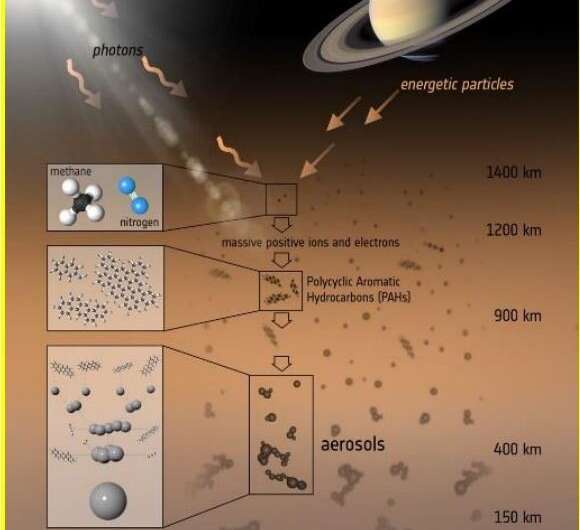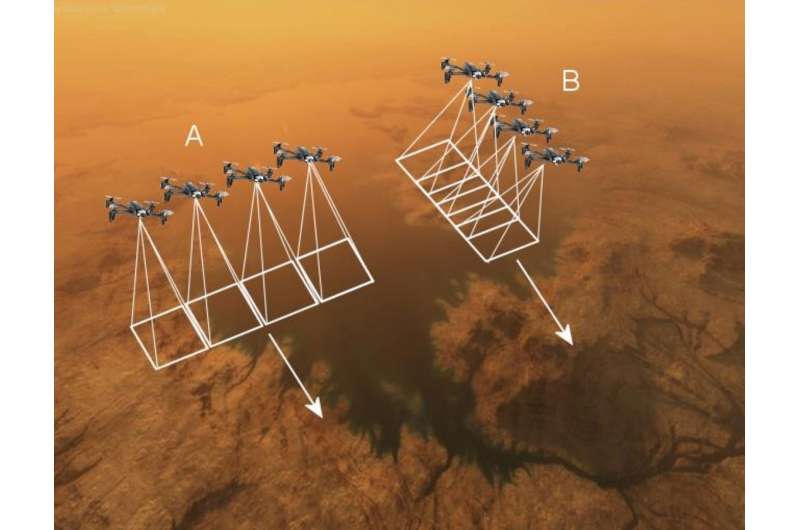Both Dragonfly and POSEIDON have much longer mission timelines planned. POSEIDON itself would comprise at least two separate vehicles. One orbiter that would allow consistent, close monitoring of the moon and at least one lander that would both collect atmospheric data on its way down as hydrological data from the lakes that would be its primary target. Another potential is to have a swarm of landers that would allow multiple data collection missions simultaneously but would require significant advances in swarm technology that might be on the horizon before the missions' launch date.
No matter what configuration of probes it ends up with, POSEIDON will have three particular mission goals for its time on the shrouded moon—understand its atmosphere, its geology, and its habitability. At this early stage of development, the mission payload is up in the air, but various instruments could answer a variety of different questions.
One instrument the team stressed was a more powerful mass spectrometer. Cassini's mass spectrometer hit its limit when it found large ions in the upper atmosphere, so most of the moon's composition remains unknown. With a more powerful instrument, more of that composition would become clear. Since Titan also has seasons, a more extended mission would allow scientists to potentially collect atmospheric data for a whole season, giving finer detail to Titan's dynamic changes.
However, the atmosphere obscures the moon's surface, making it challenging to observe Titan's geology from Earth. Having a nearby orbiter would therefore have plenty of advantages in understanding the makeup of the moon itself. The most crucial instrument for understanding Titan's geology, the second of the mission goals, is a ground-penetrating radar attached to an orbiter. On Earth, the technology is used to map utility lines or structural concrete footers, while in space exploration, it helps scientists map out potential areas of interest.
Some of those areas of interest might be harboring something even more exciting—life. Titan is one of the few places in the solar system that might be potentially habitable thanks to its standing liquid lakes. There is a lot unknown about its ability to harbor anything as complicated as a biosphere, and POSEIDON hopes to start filling in those unknowns.
The best way to collect data to fill in those unknowns is to collect a direct sample from Titan's surface. This is best done by a drone using a spectrometer similar to the one required for atmospheric observations and named CosmOrbitrap in the white paper. Additional evidence for life, such as chirality, could be collected via a chiral gas chromatograph.
Whatever the eventual payload and configuration, there is still a long way to go before anything gets off the ground. This also isn't the first time such a mission has been proposed to ESA either. Some form of it has been floating around the agency since the early 2000s. But with specific deadlines getting closer, the project might be getting to a make or break point soon.
Currently, the project plan suggests a launch in the early 2030s, arriving on Titan before the moon's spring equinox in the northern hemisphere on 22 January 2039. Dragonfly, NASA's drone mission to Titan, will likely land slightly before then and start providing valuable data to the mission planers before their final approach.

While the orbiter component of POSEIDON will remain in orbit around the planet, the lander will likely touch down in the northern hemisphere near an extensive series of lakes. Dragonfly, which will focus more on the equatorial regions, would collect data from a very different climatic, and potentially geologic, perspective.
All this effort and planning will come to naught if the project isn't funded. The white paper was submitted in response to one of the objectives of the ESA Voyage 2050 mission themes being defined as "moons of the giant planets." Titan is one of the most interesting, but there is still a long way to go before any ESA mission touches down or orbits the moon again.
Explore further



